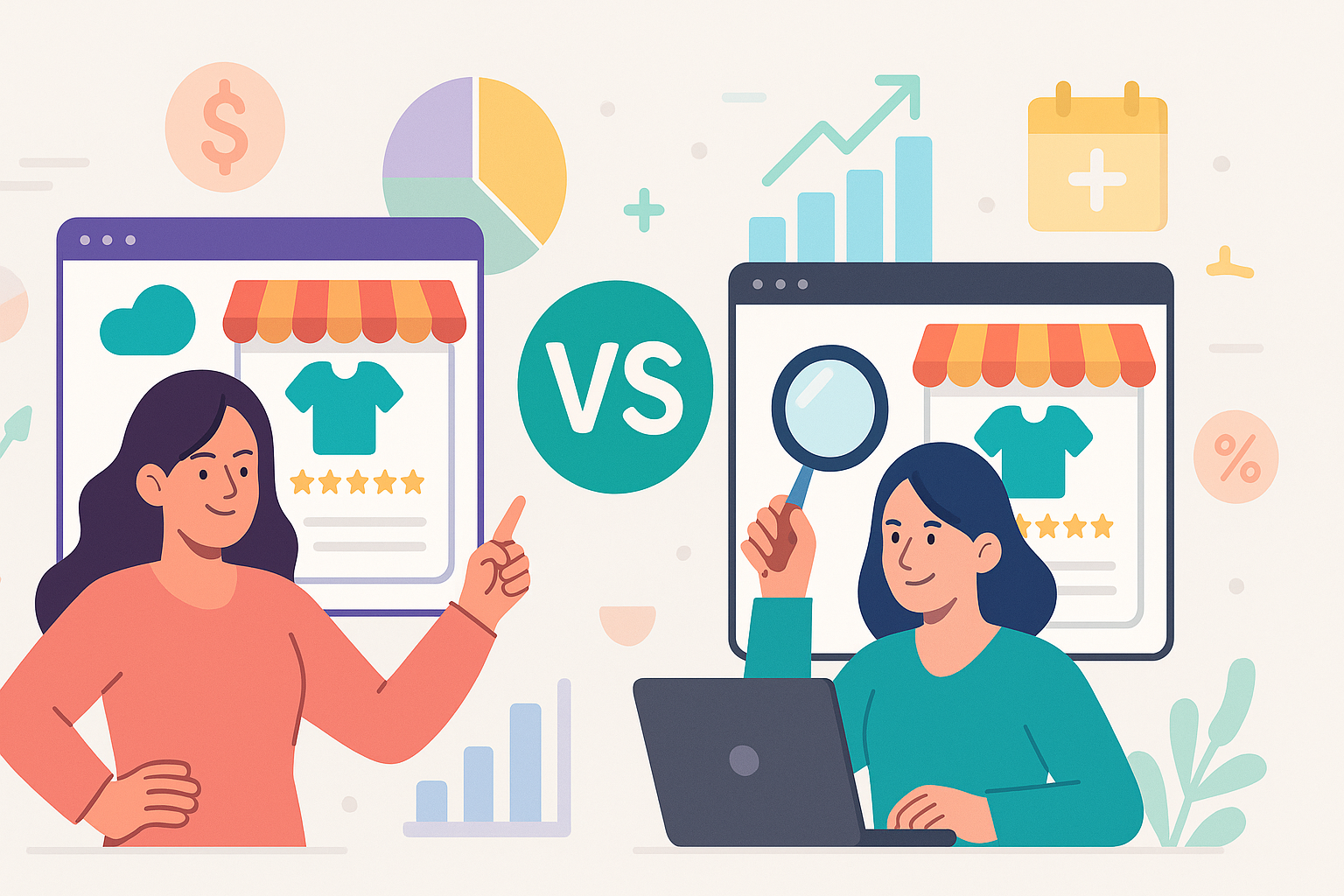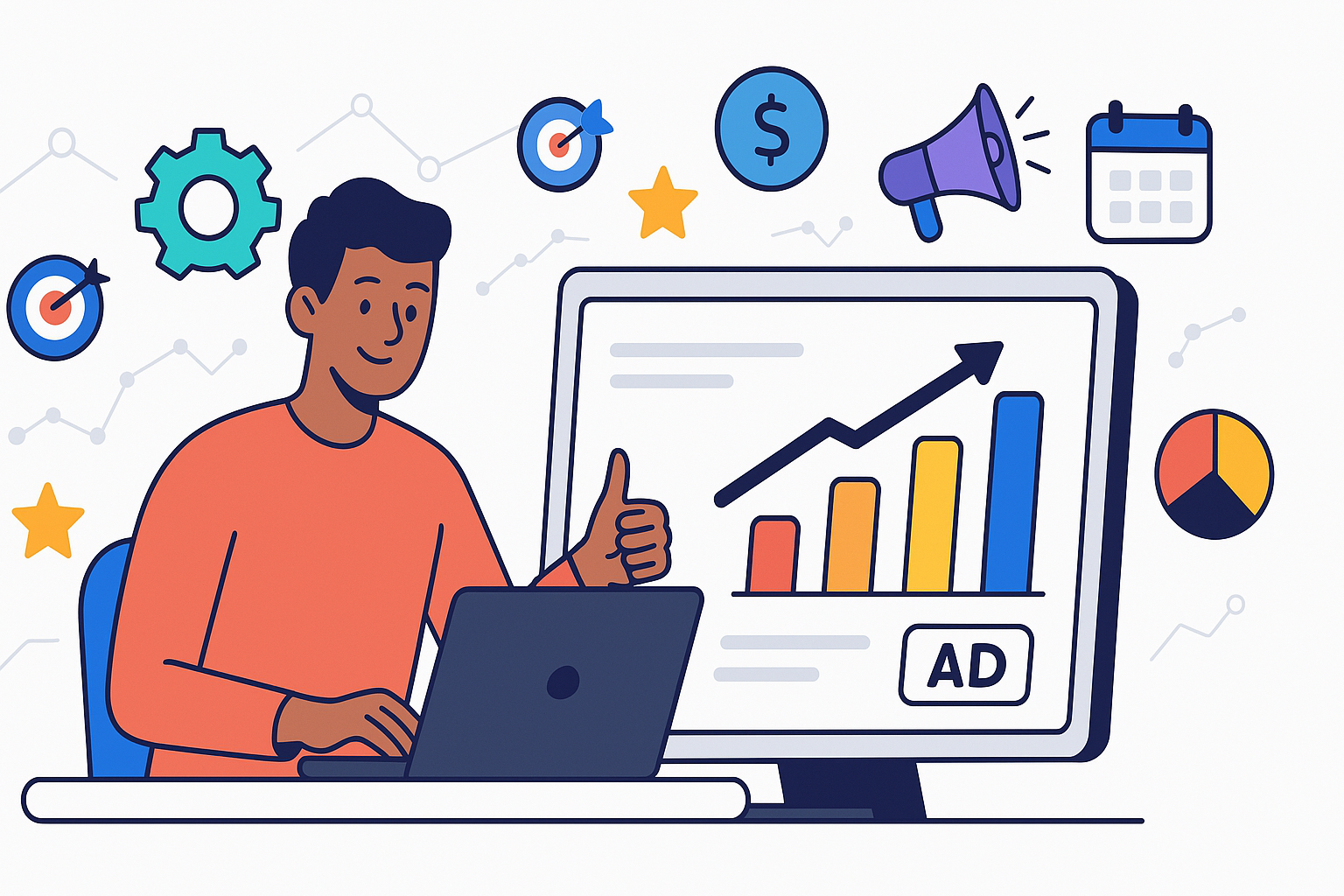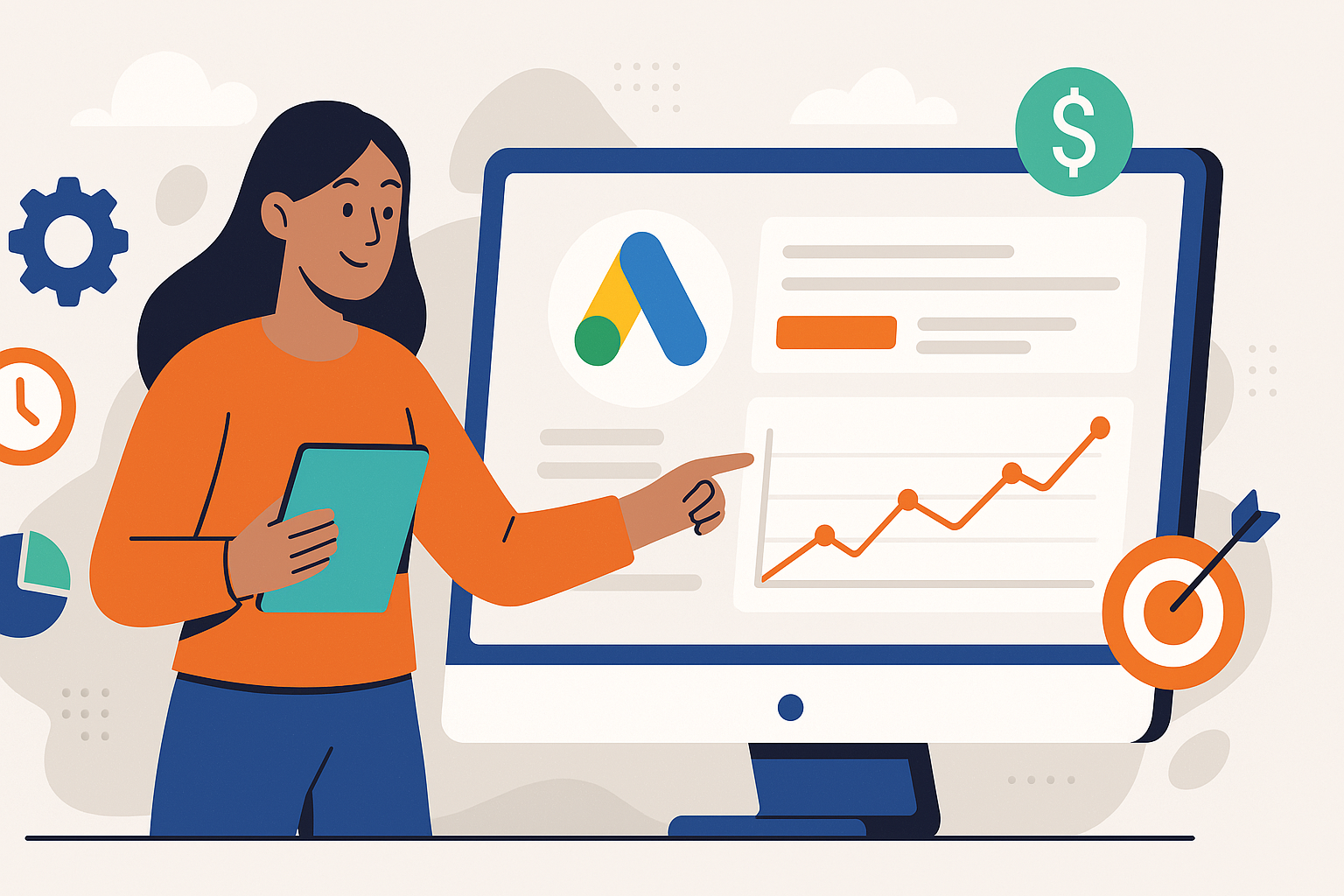What is Facebook Ads? A Comprehensive Guide for Businesses
by Francisco Kraefft on 18 Oct, 2023
You've heard the buzz, seen the sponsored posts, and perhaps wondered: what exactly is Facebook Ads? It's more than just promoted content in your newsfeed; it's a sophisticated advertising platform with the potential to connect your business with billions of people worldwide. Understanding this powerful tool is no longer optional—it's essential for growth in today's digital landscape. Whether you're looking to increase brand awareness, drive website traffic, or generate qualified leads, Facebook Ads offers a versatile solution. This guide will demystify the platform, breaking down its core components, exploring effective strategies, and showing you how to measure results like a pro. Prepare to unlock the potential of reaching your ideal customer precisely when and where it matters most.
What Exactly Are Facebook Ads? Unpacking the Platform
At its core, Facebook Ads refers to the paid advertising system offered by Meta Platforms, Inc. It allows businesses and individuals to pay to display advertisements, service offerings, and targeted content to users across Meta's vast network. This isn't just limited to the Facebook platform itself; it encompasses a powerful ecosystem designed to maximize reach and engagement.
Think of it as a gateway to connect with potential customers on:
- Facebook: The flagship platform, including News Feed, Stories, Marketplace, Video Feeds, Right Column, and more.
- Instagram: The visually driven powerhouse, featuring ads in Feed, Stories, Explore, Reels, and Shops.
- Messenger: Enabling direct conversations through sponsored messages and inbox ads.
- Meta Audience Network: Extending your reach beyond Meta's owned platforms to a network of third-party websites and apps.
Why is this ecosystem so significant?
- Unparalleled Reach: With billions of monthly active users across its platforms, Meta offers access to one of the largest online audiences globally. This sheer scale provides an incredible opportunity to find your specific audience, no matter how niche.
- Sophisticated Targeting: This is where Facebook Ads truly shines. You can move beyond basic demographics (age, gender, location) and target users based on their interests, behaviors, life events, connections, past interactions with your business, and more. This precision ensures your message reaches the people most likely to be interested in your offerings, maximizing efficiency.
- Diverse Ad Formats: From simple image ads and engaging video ads to interactive carousels, immersive collection ads, and lead generation forms, the platform supports a wide variety of creative formats. This flexibility allows you to tailor your message to your specific goals and audience preferences.
- Integration within the User Experience: Ads are designed to blend relatively seamlessly into the user's browsing experience across feeds, stories, and other placements, making them feel less intrusive than traditional advertising methods.
Understanding this ecosystem is the first step. It's not just about placing an ad on Facebook; it's about leveraging a network of interconnected platforms and sophisticated tools to achieve specific business objectives. For any business serious about digital marketing, grasping the breadth and depth of the Facebook Ads platform is fundamental to developing effective online growth strategies. It provides the foundation upon which targeted, measurable, and scalable advertising campaigns are built.
The Engine Room: How Facebook Ads Deliver Results
Now that you understand the what and where, let's delve into the how. How does Facebook decide which ads to show to which users, and when? It's not random; it's powered by a complex system designed to balance value for both advertisers and users: the Facebook Ad Auction.
Every time there's an opportunity to show an ad to a user, an auction occurs almost instantaneously. Your ad competes against other relevant ads targeting that same user. Winning the auction isn't just about having the highest monetary bid. Facebook calculates a total value for each competing ad, based on three primary factors:
- Bid: The amount you're willing to pay to achieve your desired outcome (e.g., cost per click, cost per impression, cost per conversion). Understanding how much Facebook Ads cost depends heavily on your bidding strategy and competition.
- Estimated Action Rates: Facebook's prediction of how likely a specific user is to take the action your ad is optimized for (e.g., clicking, converting, engaging). This is based on the user's past behavior and the ad's historical performance.
- Ad Quality: Facebook's assessment of the quality and relevance of your ad. This includes factors like user feedback (positive and negative), click-bait detection, engagement rates, and post-click landing page experience.
The ad with the highest total value wins the auction and gets shown. This system incentivizes advertisers to create high-quality, relevant ads that provide a positive user experience, not just to outbid competitors.
Navigating the Ads Manager
Your command center for creating, managing, and analyzing campaigns is the Meta Ads Manager. It's structured hierarchically:
- Campaigns: The top level, where you define your overall advertising objective (e.g., Brand Awareness, Traffic, Lead Generation, Sales).
- Ad Sets: Within each campaign, you create ad sets. Here, you define your target audience, placements (where your ads appear, like Facebook Feed, Instagram Stories, etc.), budget (daily or lifetime), and schedule.
- Ads: Inside each ad set, you create the actual ads – the creatives (images, videos, text), headlines, descriptions, and calls-to-action (CTAs) that users will see.
Key Levers You Control:
- Objective Selection: Choosing the right campaign objective is crucial as it tells Facebook what result you prioritize, influencing how it optimizes ad delivery.
- Audience Targeting: Define who sees your ads. Options include:
- Core Audiences: Targeting based on demographics, location, interests, and behaviors.
- Custom Audiences: Reaching people who have already interacted with your business (website visitors, app users, customer lists, engagement on Facebook/Instagram).
- Lookalike Audiences: Finding new people whose characteristics are similar to your best existing customers or audiences.
- Placement Selection: You can choose specific placements or use Advantage+ Placements (formerly Automatic Placements) to let Facebook optimize delivery across its network for better results.
- Budgeting & Bidding: Control your spend and how aggressively you compete in the auction.
Understanding these mechanics – the auction dynamics and the structure of Ads Manager – empowers you to make informed decisions when setting up and optimizing your campaigns for maximum impact.
From Strategy to Success: Building High-Performing Facebook Ad Campaigns
Knowing how the platform works is essential, but success hinges on a solid strategy and meticulous execution. Simply boosting a post won't cut it for sustainable growth. Building high-performing campaigns requires a thoughtful approach.
1. Start with Clear Objectives: What do you really want to achieve? Don't just run ads for the sake of it. Align your campaign objective in Ads Manager with tangible business goals, often mapped to stages of the marketing funnel:
- Awareness: Introduce your brand or product to a new audience (Objective: Brand Awareness, Reach).
- Consideration: Encourage people to think about your business and seek more information (Objectives: Traffic, Engagement, App Installs, Video Views, Lead Generation, Messages).
- Conversion: Drive valuable actions like purchases, sign-ups, or form submissions (Objectives: Conversions, Catalog Sales, Store Traffic). Clarity here dictates your targeting, messaging, and metrics for success.
2. Define Your Ideal Customer: Who are you trying to reach? Go beyond basic demographics. Create detailed buyer personas: What are their pain points? What motivates them? What are their interests and online behaviors? Where do they hang out online? This deep understanding allows you to leverage Facebook's targeting options effectively, crafting audiences that resonate with your message.
3. Craft Compelling Creatives: Your ad creative is your first impression. It needs to stop the scroll and capture attention instantly.
- Visuals: Use high-quality images or videos that are visually appealing and relevant to your offer. Video often outperforms static images, especially in placements like Stories and Reels.
- Copywriting: Write clear, concise, and benefit-driven copy. Address your audience's needs directly. Start with a strong hook, clearly state the value proposition, and include a compelling call-to-action (CTA).
- Call-to-Action (CTA): Use the appropriate CTA button (e.g., Shop Now, Learn More, Sign Up, Contact Us) that clearly tells users what you want them to do next.
4. Embrace A/B Testing (Split Testing): Never assume you know what works best. Continuously test different elements of your campaigns:
- Creatives: Test different images, videos, headlines, and ad copy.
- Audiences: Test different interest groups, Lookalike percentages, or Custom Audience definitions.
- Placements: Compare the performance of different placements (e.g., Feed vs. Stories).
- CTAs: Test different call-to-action buttons. Systematic testing provides data-backed insights to optimize performance and improve your return on investment (ROI).
5. Optimize the Landing Page Experience: Your ad is only half the battle. Where do users go after they click? Ensure your landing page is:
- Relevant: It should directly match the ad's promise.
- Clear: Easy to understand and navigate.
- Mobile-Optimized: A majority of Facebook users are on mobile.
- Fast-Loading: Slow pages lead to high bounce rates.
- Focused: Have a clear conversion goal and minimal distractions. A seamless transition from ad to landing page is crucial for converting clicks into customers. Building successful campaigns is an iterative process of strategizing, creating, testing, and refining.
Data-Driven Decisions: Measuring Your Facebook Ads Performance
Running Facebook Ads without tracking results is like driving blindfolded. To understand what's working, what's not, and how to improve, you need to embrace data. Measurement is not just about seeing numbers; it's about gaining actionable insights to fuel smarter decisions and maximize your return on ad spend (ROAS).
The Foundation: Tracking Implementation
Effective measurement starts with proper tracking setup:
- Meta Pixel: This is a snippet of code you place on your website. It tracks visitor actions (like page views, add-to-carts, purchases) and links them back to your Facebook Ads. This allows you to measure conversions, build Custom Audiences based on website activity, and optimize ad delivery for specific actions.
- Conversions API (CAPI): Working alongside the Pixel, CAPI creates a more reliable direct connection between your marketing data (from your website server, CRM, etc.) and Meta's systems. This helps overcome data loss due to browser restrictions or connectivity issues, providing a more complete picture of campaign performance, especially crucial after privacy changes like Apple's iOS 14 updates.
Key Metrics to Monitor (and Understand):
Facebook Ads Manager provides a wealth of data. Focus on the metrics most relevant to your campaign objectives:
- Reach: The number of unique people who saw your ads.
- Impressions: The total number of times your ads were displayed.
- Frequency: The average number of times each person saw your ad (Impressions / Reach).
- Click-Through Rate (CTR): The percentage of impressions that resulted in a click (Clicks / Impressions). Indicates ad relevance and creative effectiveness.
- Cost Per Click (CPC): The average cost you paid for each click.
- Cost Per Mille (CPM): The cost per 1,000 impressions. Useful for understanding audience costs.
- Conversions: The number of desired actions completed (e.g., purchases, leads, sign-ups) attributed to your ads.
- Cost Per Action/Acquisition (CPA): The average cost for each conversion (Total Spend / Conversions). A critical metric for profitability.
- Conversion Rate (CVR): The percentage of clicks that resulted in a conversion (Conversions / Clicks). Measures ad and landing page effectiveness.
- Return on Ad Spend (ROAS): The total revenue generated from your ads divided by the total ad spend (Revenue / Ad Spend). The ultimate measure of profitability for e-commerce.
Interpreting the Data:
Don't just look at individual metrics in isolation. Analyze trends over time and understand the relationships between them. For example:
- A high CTR but low Conversion Rate might indicate a compelling ad but a poor landing page experience.
- A high Frequency might lead to ad fatigue, potentially decreasing CTR and increasing CPA.
- Comparing CPA across different ad sets or creatives helps identify top performers.
At iVirtual, we live and breathe data. We meticulously track campaign performance, analyze metrics through sophisticated reporting, and connect ad spend directly to tangible business outcomes. This data-driven approach allows us to continuously optimize campaigns, ensuring your budget is allocated effectively and driving measurable growth. Effective measurement transforms advertising from guesswork into a predictable engine for scaling your business.
Beyond the Basics: Advanced Facebook Ads Tactics and Future Trends
Once you've mastered the fundamentals of Facebook Ads, a whole new level of strategic depth awaits. Moving beyond basic campaigns allows you to refine targeting, personalize experiences, and stay ahead of the curve.
Advanced Strategies to Elevate Your Results:
- Sophisticated Retargeting: Go beyond simply showing ads to all website visitors. Segment your audiences based on specific actions (or inaction). For example: target users who added items to their cart but didn't purchase, users who viewed specific product categories, or past purchasers you want to re-engage with new offers. Use Dynamic Ads to automatically show product ads to people who have expressed interest in those specific products on your website or app.
- Lead Generation Ads: Capture leads directly within the Facebook or Instagram interface. Users can submit their information through a pre-filled form without leaving the platform, reducing friction and often increasing conversion rates for lead-based objectives.
- Advantage+ Campaigns: Leverage Meta's AI and machine learning more heavily. Campaigns like Advantage+ Shopping automate many aspects of campaign setup (like audience targeting and placements), allowing the system to find the best opportunities across the network based on your conversion goals. While requiring trust in the algorithm, these can be highly effective, especially for e-commerce.
- Conversion Lift Studies: Conduct controlled experiments to measure the true incremental impact of your Facebook Ads, separating correlation from causation.
- Value-Based Lookalikes: Create Lookalike Audiences not just based on who converted, but on the value they brought (e.g., high lifetime value customers). This helps find new prospects likely to be high-value customers.
Navigating the Evolving Landscape:
The digital advertising world is constantly changing. Key considerations include:
- Privacy Enhancements: Updates like Apple's App Tracking Transparency (ATT) framework impact tracking and targeting capabilities. Implementing the Conversions API (CAPI) and focusing on first-party data strategies become increasingly important.
- AI and Machine Learning: Meta continues to invest heavily in AI for optimization, targeting, and creative suggestions. Understanding how to work with the algorithm (e.g., providing sufficient data, using automated campaign types effectively) is key.
Future Trends to Watch:
- Social Commerce: Increased integration of shopping features directly within Facebook and Instagram (Shops), creating seamless paths from discovery to purchase.
- Messaging for Business: Growing use of Messenger and WhatsApp for customer service, lead nurturing, and even transactions initiated via ads.
- Short-Form Video Dominance: Continued growth and importance of formats like Reels for engagement and advertising.
- Augmented Reality (AR): Potential for AR filters and experiences integrated into ads, offering virtual try-ons or interactive product previews.
Mastering Facebook Ads is an ongoing journey. By embracing advanced tactics, adapting to platform changes, and keeping an eye on future trends, you can ensure your advertising efforts remain effective and continue to drive meaningful results within your broader performance marketing strategy. We help our clients navigate this complexity, leveraging advanced techniques to maximize their ROI.
Conclusion
Facebook Ads represent a dynamic and indispensable component of modern digital marketing. From understanding the vast Meta ecosystem and the intricacies of the ad auction to strategically crafting campaigns, meticulously measuring performance, and exploring advanced tactics, harnessing this platform effectively requires knowledge and precision. It offers unparalleled reach and sophisticated targeting capabilities, enabling businesses of all sizes to connect with their ideal customers. By focusing on clear objectives, compelling creatives, continuous testing, and data-driven optimization, you can transform Facebook Ads from a simple advertising channel into a powerful engine for sustainable business growth.
Ready to leverage the full power of Facebook Ads with a data-driven approach? Let iVirtual craft and manage campaigns that deliver measurable results. Contact us today to discuss your goals!


